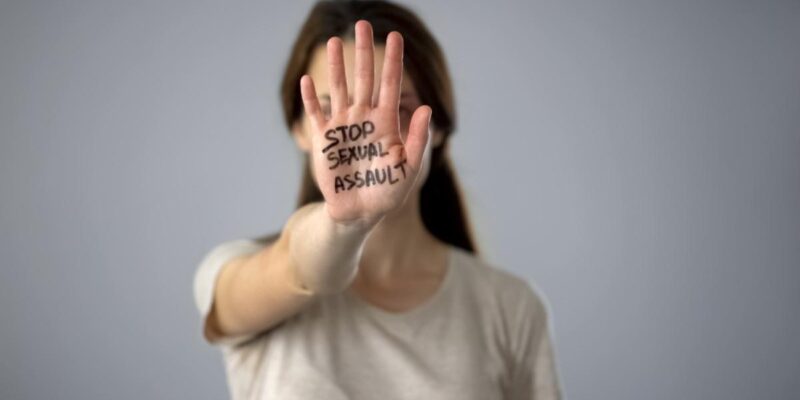
There is a sea change in how society views false accusations of sexual abuse. And it’s about time.
The lawsuit John C. Depp, II v. Amber Laura Heard (2022) points to this transformation. Depp and Heard sued each other for defamation with “actual malice” over public accusations of domestic violence (DV) during their marriage; Heard also sued Depp’s attorney for making false statements. Unlike an earlier case brought by Depp in the United Kingdom, the American jury found unanimously in his favor and he was awarded $5 million in punitive damages and $10 million in compensatory ones, although the punitive damages were later reduced to $350,000 due to Virginia state law. Heard was awarded $2 million in compensatory damages from the attorney and $0 in punitive damages from Depp. A settlement was later reached.
Depp’s powerful testimony about the deep pain he’d experienced from the defamation almost certainly contributed to the jury’s large compensatory damages. At the end of four days on the stand, Depp was asked what he had lost due to Heard’s allegations. He answered, “Nothing less than everything.” After the verdict, he declared, “The jury has given me back my life.”
In a later interview, Depp commented on a rarely considered consequence of false accusations of sexual abuse—the effect on his loved ones. “Six years ago [when Heard’s allegations went public], my life, the life of my children, the lives of those closest to me, and also, the lives of the people who for many, many years have supported and believed in me were forever changed,” said Depp. The person falsely accused is not the only victim.
False accusations have ruined innocent lives, largely because the data which directs current law and policy has been weaponized for use in gender warfare. A lot of what passes for data and research amounts to a smear campaign against men. This is especially true of white men who bear the brunt of a double “privilege”—that is, they are both male and white. (Add the word “straight” and you have the trifecta of social-justice-warrior villains.) The #MeToo movement, with its demand to always believe the woman, is just one example of this weaponization; the corollary of “always believe the woman,” of course, is “always find the accused man guilty.” This is not only antimale, but also anti-Western jurisprudence. After all, if the man is automatically guilty, why even have an investigation or trial? Dispense with due process; go directly to imprisonment to save taxpayers money.
Casting men as abusers is essential to reconstructing society in the image of express social justice. If men as a class are natural abusers and women as a class are naturally abused, then a justice system based on individual rights makes no sense; differing systems of justice must address the different classes that are based on identity. Traditional marriage and family become sources of cruelty and danger. Every man should be approached with suspicion by every woman.
This vicious and divisive approach to social relations has been propped up by data and studies, most of which issue from ideologically biased academia or institutes. The statistics must be reopened with fresh eyes. Better yet, they should be replaced by honest research.
Many articles and books examine the crime of making false accusations of sexual abuse, but the issue faces a huge obstacle. No one knows the rate at which they occur.
Why? Consider statistics on just one form of false accusations—rape. Politically driven “researchers” tend to base their estimates on ideology. Perhaps the most famous or notorious statistic comes from the radical feminist Susan Brownmiller’s 1975 book Against Our Will: Men, Women and Rape. She claims 2 percent of rape accusations are false. Brownmiller’s “cited” source has never been verified, although many have tried, and the statistic has been vigorously refuted.
Nevertheless, the 2 percent figure is probably the most circulated rate for false reports in the literature on rape. Today, it has been replaced with the mantra “always believe the woman,” which drives the rate of false accusations down to zero, at least in cases where the alleged victims are female.
So, what is the rate of false rape allegations? Since rape may be the most analyzed form of sexual abuse, people might expect the data on it to be the most accurate. People would be wrong. Massive clashes of data occur depending on the source. Careful researchers estimate the rate of false rape accusations on the best data available, such as police records or Bureau of Justice Statistics, but these only include abuse that’s reported to authorities, which antirape activists claim is understated.
Nevertheless, a recent article in Slate by New York Times Magazine author Emily Bazelon and former Slate senior editor Rachael Larimore states, “If we use the Bureau of Justice Statistics that show about 200,000 rapes in 2008, we could be looking at as many as 20,000 false accusations.”
Philip Rumney, a professor of criminal law, may have made the most reliable assessment to date by comparing studies that followed sound methodology. He concluded the rate of false rape reports is probably between 8 percent to 10 percent. (To his credit, Rumney also did a study entitled “Policing Male Rape and Sexual Assault” to spotlight this neglected problem.) But Rumney cautions readers against extrapolating his estimated rate on rape to other types of crime, even sexual ones. Again, to his credit.
Whether the rate of false accusations of rape is 0 percent or 10 percent makes a huge difference in which laws and policies are implemented and how. It determines which resources are allocated and in what amount. If the rate of false accusations of rape is zero, for example, then why even waste the time and money on a trial for an accused man? The same dynamic is true of other forms of sexual violence, like domestic abuse. A less tangible but equally powerful effect of the rate of false accusations is the view of males it encourages.
A recent international survey may take us closer to accuracy. A survey including eight countries on false accusations of sexual and domestic abuse was conducted by the neutral research resource YouGov on behalf of the organization End to DV (Excel survey data here). It was released on March 14 along with a synopsis of its results: “Survey: False Allegations of Abuse Are a Global Problem, Women Most Often the Accuser.”
The results deserve scrutiny, not only because some findings are surprising but also because the survey seems politically neutral and fact-finding: 9,432 adults (aged eighteen or older) in Europe (Poland and Spain), the United Kingdom, North America (Canada and the United States), Argentina, India, and Australia participated. They answered questions about their own experience with false accusations as well as the experiences of people they know. Child abuse, domestic violence, sexual abuse, sexual assault, and rape were the categories included as abuse.
To the question of whether they had ever been falsely accused of abuse, the percentage of participants who replied “yes” was 4–19 percent. Broken down by countries, it was 19 percent in India, 10 percent in Australia, 10 percent in the United States, 8 percent in Canada, 7 percent in Argentina, 4 percent in the United Kingdom, 4 percent in Poland, and 4 percent in Spain. The figures have been weighted by YouGov and represent all adults (ages eighteen or older) in each country. The wide range of statistics may reflect differences in legal systems and cultures.
The End to DV website offers a rough breakdown of the female to male false accusers:
Among those who have known someone falsely accused of abuse, the majority said the false accuser was female and the accused person was male (except in Poland where a narrow plurality said the false accuser was male). In most countries (with the exceptions of Canada and the UK), about one-third of those who said they knew someone falsely accused of abuse said the false allegations were made as part of a child custody dispute.
A parent accused of sexual abuse is less likely to win custody.
Sexual abuse can be extremely difficult to assess for several reasons. Often the crimes occur in private between two people, which sets up a “he said/she said” scenario. A great deal of emotion surrounds sexual abuse, which can cloud memories and lead either to exaggeration due to outrage or silence due to shame. The issue has also been weaponized by those with political agendas; the motives can include winning elections, gaining research grants or status, pushing an ideology, or getting revenge on an ex. The list is long.
Hard facts on which to base sound policy and law are badly needed. New research continues to come out, but it’s not clear that this will result in a reevaluation of past data that some call flawed and ideologically driven. False accusations not only harm the accused and their loved ones, but they also harm real victims of sexual abuse who are taken less seriously by a skeptical public. On a societal basis, false accusations harm everyone who wants to live the truth.








